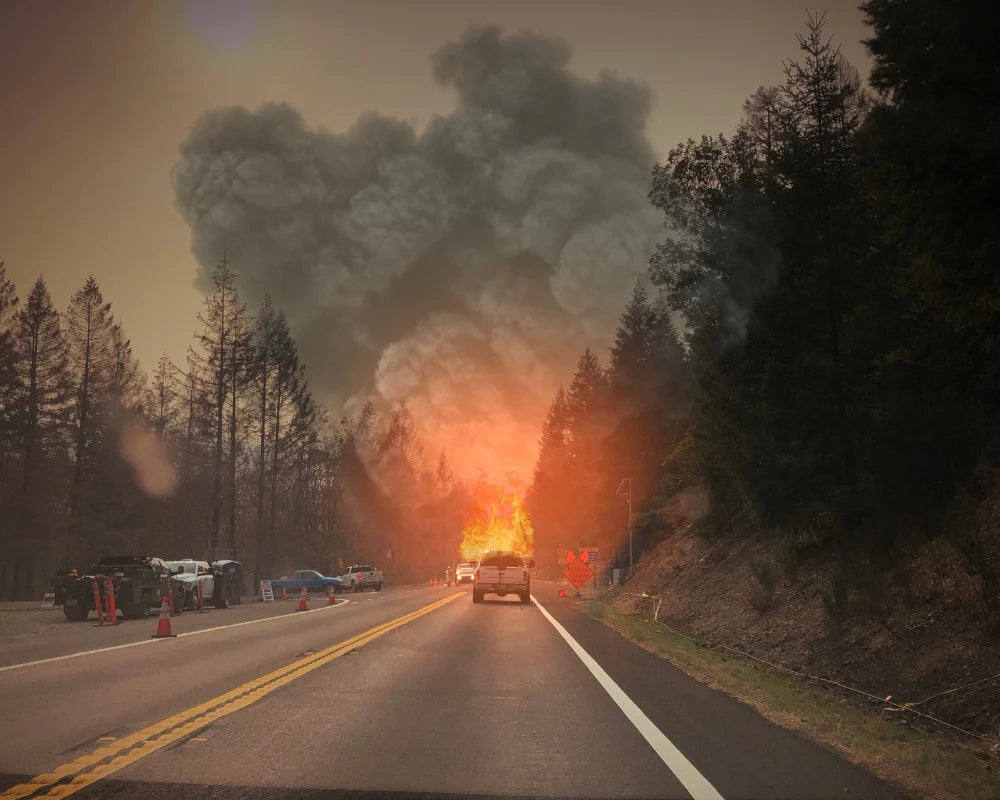The Science Behind California’s Wildfires
The recent California fires, especially those ravaging the Greater Los Angeles area, have been fueled by three primary factors: strong winds, dry conditions, and dry vegetation. According to Todd Hall, a lead meteorologist at the National Weather Service, these conditions create a perfect storm for wildfires.

Climate change LA fires are becoming increasingly common as warmer temperatures and prolonged droughts dry out vegetation, making it more susceptible to ignition. The California fire map shows a worrying trend—each year, the affected areas grow larger, and the fires more destructive.
Timeline of the 2025 Greater LA Fires
The fires began on January 7, 2025, with the Palisades Fire erupting in Pacific Palisades, a neighborhood east of Malibu. Quickly growing to 23,713 acres, it destroyed more than 7,400 structures and was only 65% contained by mid-January.
Later that day, the Eaton Fire ignited near the sprawling national forest lands north of downtown Los Angeles, spreading to 14,021 acres and damaging over 10,400 structures. These two fires alone account for a significant number of the LA fires currently listed on the California fire map.

While firefighters worked tirelessly to contain these blazes, smaller fires—like the Lidia, Archer, and Hurst fires—broke out across the region. Thankfully, these smaller fires have since been fully contained.
Who Has Lost Homes in LA Fires?
More than 200,000 people were initially evacuated as the fires spread, with 88,000 remaining in evacuation zones as of January 10. Entire neighborhoods were reduced to ash, with over 10,000 homes destroyed. Many residents, including celebrities, were left homeless. Among them are Taylor Swift, who has donated generously to relief efforts, and Mel Gibson, who also suffered losses.

The fires have devastated lives. Tragically, 27 people have died, including some who lost their lives defending their homes. The question, "Who died in the LA fires?" reveals heartbreaking stories of loss, including Hollywood actress Dalyce Curry, who perished in Altadena.
Are the LA Fires Still Going?
As of now, the Palisades Fire and Eaton Fire are partially contained, while smaller fires have been extinguished. For up-to-date information, refer to the latest news LA fires section or check the California fire map.

Why Is There Fire in LA?
The root causes are complex, but experts point to human activities, climate change, and natural phenomena. The combination of drought, high winds, and flammable vegetation creates ideal conditions for wildfires. What sparked the LA fires? While the official cause remains under investigation, suspected sources include electrical malfunctions and arson.
Celebrity Impact
Wildfires spare no one, and celebrities like Mel Gibson and Taylor Swift have experienced their share of losses. While Gibson faced significant property damage, Swift has been a prominent supporter of wildfire relief efforts, urging her followers to donate and support displaced families.
How Many Houses Have Been Lost in LA Fires?
Over 10,000 homes have been reduced to rubble, with insured losses estimated to exceed $20 billion. These staggering numbers highlight the importance of fire prevention and emergency preparedness.
Who Started the LA Fires 2025?
Authorities are investigating the origins of these fires. Whether due to negligence, natural causes, or deliberate acts, identifying and addressing the source is essential for preventing future disasters.
Where to donate for LA fires?
You can support those affected by the LA fires by donating to organizations like the American Red Cross. Visit their website at redcross.org, call 1-800-RED CROSS (800-733-2767), or text CAWILDFIRES to 90999 to make a contribution. Your donations help provide relief, recovery assistance, and preparation for future disasters.
What sparked the LA fires?
Investigators are exploring several possibilities, including arson, issues with power company utilities, and the possibility of a fire in the Pacific Palisades that may have reignited due to Santa Ana winds. These strong winds, which reached speeds of 80-100 mph (128-160 km/h), exacerbated the conditions.
Who started the LA fires in 2025?
The exact cause of the 2025 LA fires has not been confirmed by fire officials. However, lawsuits suggest that equipment belonging to Southern California Edison, the largest utility provider in Southern California, may have been involved.
Why are there fires in LA?
The fires in Los Angeles are a result of a combination of factors: extreme drought conditions—with less than 10% of average rainfall since October 1—and strong offshore winds. The National Weather Service described these conditions as some of the worst fire weather seen in recent years.
How to help with LA fires?
You can assist those impacted by the LA fires in 2025 by donating to trusted organizations like the Red Cross. Contributions can be made through their website at redcross.org, by calling 1-800-RED CROSS (800-733-2767), or by texting CAWILDFIRES to 90999. These donations support disaster response and recovery efforts.

Where to volunteer for LA fires?
Here are some opportunities for volunteering during the LA fires:
-
Leimert Park Volunteer (It's Bigger Than Us)
-
Pasadena Community Job Center
-
Collins & Katz Family YMCA (Sawtelle)
-
Quirk Downtown L.A. Volunteer
-
Best Friends Animal Society (Sawtelle)
-
Neighbors and Friends (Pasadena)
-
Hollywood Food Coalition
-
Flintridge Center
Future Outlook: Preventing the Next Disaster
With new LA fires breaking out every year, the focus must shift to prevention. This includes better forest management, stricter building codes, and increased public awareness. Communities must also adapt to the realities of a changing climate.

The Los Angeles fires are a stark reminder of the challenges posed by climate change, human activity, and natural conditions. While the question "Why is California on fire?" doesn’t have a single answer, addressing these issues collectively is crucial. From understanding how are the LA fires to supporting those affected, every action counts. Together, we can work toward a safer, more resilient California.
Stay informed and take action. Whether it’s donating, volunteering, or advocating for change, your efforts can make a difference in mitigating the impact of wildfires.


















